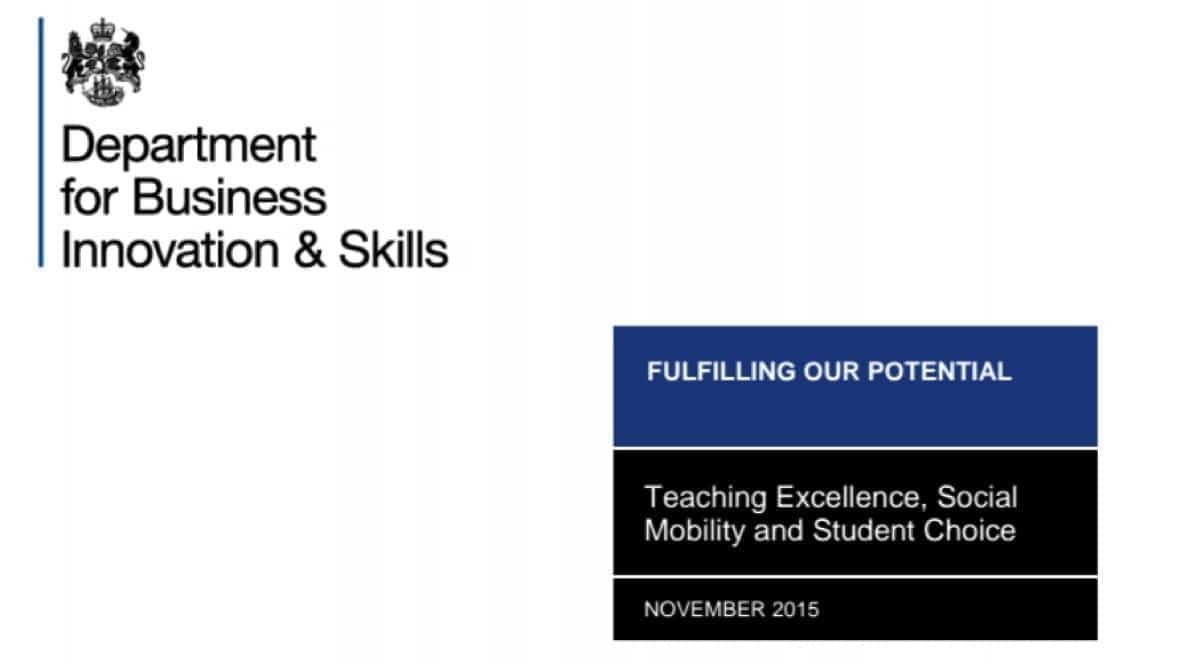Students and the HE landscape – other models are available
This consultation contains proposals to reshape the higher education landscape to have students at its heart. Its core aims are to raise teaching standards, provide greater focus on graduate employability, widen participation in higher education, and open up the sector to new high-quality entrants.

Students’ Unions
23.Students’ unions play an important role representing student views and promoting the provision of academic and other services. There are numerous students’ unions across the UK and the Government recognises the constructive role they play in representing students’ interests. Government has in the past provided funding via the National Union of Students, including a Campus Cohesion Fund and support for voter registration.
24.The Government is currently taking steps through our trade union reforms to improve union practices and increase transparency around how funds are spent. In this consultation, we are asking for public views on the role of students’ unions and what further steps could be taken to increase transparency and accountability to individual members.


In its role as the supervisory authority for public sector higher education institutions, the Swedish Higher Education Authority focuses on students´ rights. This means that the authority scrutinises the higher education institutions to ensure that they comply with the laws and statutes that apply to higher education.
This actually covers a wide range of matters including the following:
What possibilities do students have to participate in making decisions at their HEIs?
As a student you can influence your studies through representation in your HEI’s decision making and planning bodies that plan or decide on the issues that are significant for the situation of students and their studies. If a decision is made by one single individual, she of he has to inform and consult a student representative in good time before the decision is made or the planning completed.
This right to representation is spelt out in Section 7 of the Swedish Higher Education Act which has an explicit requirement:
The students are entitled to representation when decisions or preparations are made that have bearing on their courses or programmes or the situation of students. Ordinance (2010:701).
Every Thursday morning a decision meeting is held which is called the Vice-Chancellor’s Briefing (Rektorsföredragning). It is there that the Vice-Chancellor takes fundamental or principle decisions and signs major agreements.

Student Unions at Stockholm University
The student unions are membership organizations with the purpose to represent the common interests of students. The most important assignment of a student union is to guarantee that students are able to influence their education, but student unions also have a major role in the social aspects of university life. Stockholm University has four student unions, one large and three departmental student unions.All Students have the Statutory Right to Influence
According to the Higher Education Act, a student union shall have as its principal purpose to monitor and participate in the development of education and the prerequisites for studies at their university.The law also states that all students have the right to exert influence over their education. Each university shall work to make sure students take an active part in the process of developing courses and programs.
So, will the Office for Students follow a similar line? It doesn’t look like it at the moment but if the new higher education landscape is genuinely to have students at its heart then should it not have at least something positive to say about student representation? Whilst it would not be necessary to legislate to promote greater student involvement it does seem surprising that the only points made about student involvement (beyond the naming of the ‘Office for Students’) concern the “accountability and transparency” of students’ unions. This seems a long way from genuinely putting students at the heart.











